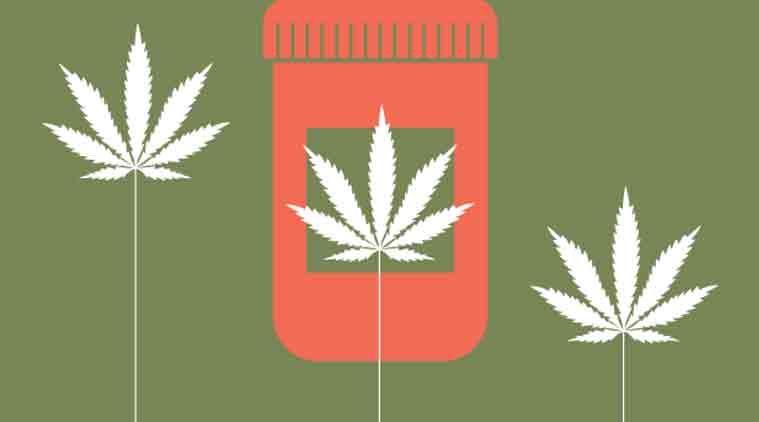By Niti Aayog
Source: indianexpress.com
A 19th-century commission report is instructive — it argued against bans, distinguished between private and social costs, highlighted externalities.

Cannabis indica is low on fibre and cannabis sativa is high on fibre. For years and years, industrial hemp has been used for a variety of commercial purposes and has provided livelihood for people.
In many countries, there is an ongoing debate on legalising cannabis (marijuana). This means the drug, not the plant. Such bans or controls are typically creatures of the 20th-century. You may have come across reports about an Indian commission having contributed to initial arguments for a ban. This is the Indian Hemp Drugs Commission Report of 1893/94. Originally, the commission was set up to examine the use and abuse of cannabis in Bengal and the geographical mandate was later extended to entire India.
I think blaming that commission is tantamount to calumny. If anything, the Indian Hemp Drugs Commission argued against any bans. For that day and age, it is remarkable that the commission distinguished between private costs and social costs and highlighted externalities. “Viewing the subject generally, it may be added that the moderate use of these drugs is the rule, and that the excessive use is comparatively exceptional. The moderate use practically produces no ill effects. In all but the most exceptional cases, the injury from habitual moderate use is not appreciable. The excessive use may certainly be accepted as very injurious, though it must be admitted that in many excessive consumers the injury is not clearly marked. The injury done by the excessive use is, however, confined almost exclusively to the consumer himself; the effect on society is rarely appreciable.”
There is a cannabis drug and there is a cannabis plant. Preparations from the plant are psychotropic drugs that can be used for the kind of recreational use I just mentioned, and these can also be used for medicinal purposes. Hence, the dilemma — how do I ensure medicinal use, while curbing or controlling recreational use? The plant has something called tetrahydrocannabinol (THC), a sub-category of what are called cannabinoids. If you want me to be specific, there are 65 cannabinoids other than THC. THC gives the cannabis plant those recreational and medicinal qualities. For better or for worse, humans desire THC.
But I read a paper that told me the cannabis plant produces THC to ward off herbivores. Therefore, herbivores don’t like THC, it is humans who are addicted. I have suggested there is only one kind of cannabis plant. That’s incorrect. Ignoring sub-species, there are three main species — cannabis sativa, cannabis indica and cannabis ruderalis. Cannabis ruderalis is rarer, you will have to go to Russia to find one. But cannabis sativa and cannabis indica grow in India, often a function of the climatic zone. Cannabis sativa and cannabis ruderalis have lower levels of THC than cannabis indica. Should I clamp down on cannabis indica or on all three varieties of the cannabis plant? Incidentally, you can visually recognise the three types of cannabis plant — sativa is tall, indica is medium and ruderalis is short.
Let me muddy the waters by bringing in hemp, specifically industrial hemp. Recreational and medicinal cannabis comes from cannabis indica, industrial hemp comes from cannabis sativa. Cannabis indica is low on fibre and cannabis sativa is high on fibre. For years and years, industrial hemp has been used for a variety of commercial purposes and has provided livelihood for people. It’s not that cannabis sativa has no THC, but levels are low, around 0.3 per cent. For any recreational or medicinal use, you need higher levels of THC, at least 2 per cent, closer to 20 per cent. Broadly, there are two ways to go. I can encourage cannabis sativa and control cannabis indica. Alternatively, instead of going species-wise, I can certify those with low levels of THC. The former is simpler and seems to be what many countries do. The latter is preferred by EU and EU certifies 26 varieties of cannabis sativa with low THC. Today, 95 per cent of the world’s hemp production is from France (71 per cent) and China (24 per cent). That’s largely because, in many countries, I am ambivalent between cannabis indica and cannabis sativa, or if you prefer, low THC cannabis and high THC cannabis. Even if I recognise the difference, how will I enforce it? How will I prevent cross-pollination?
India is no different and the Narcotics Drugs and Psychotropic Substances Act of 1985 is illustrative. Under the definitions, “cannabis plant means any plant of the genus cannabis”. Therefore, under Section 9(a), without differentiation across different varieties of the plant, the Central government can permit and/or regulate cultivation, gathering, production, possession, sale, purchase, transport and inter-state export and import. This doesn’t prevent industrial hemp being grown, but doesn’t free its cultivation, devoid of controls. Under Section 10(a), the state government has similar powers. Marijuana may be produced from cannabis indica. But if I have understood it right, ganja, bhang, siddhi and charas can also come from cannabis sativa. Therefore, in Uttarakhand, invoking Section 10(a), there was the Uttaranchal (The Uttar Pradesh Excise Act, 1910 Amendment Act) Act of 2002, which also regulated and controlled cannabis sativa. However, in 2005, an excise department notification loosened this a bit. Industrial hemp can now be cultivated and procured (exclusively) by the Bamboo and Fibre Development Board. Within forest areas, this procurement will be through a collection licence to the Uttaranchal Forest Development Corporation.
In that continuum, from cultivation to sale/purchase, transport and export/import, the cultivation bit has been relaxed somewhat. Perhaps other states where cannabis sativa can be grown should take a more dispassionate look too. That eight-volume report of the Indian Hemp Drugs Commission is quite refreshing, in terms of mindset. Read the one (volume 2) that probed the connection between hemp drugs and insanity.
No comments:
Post a Comment